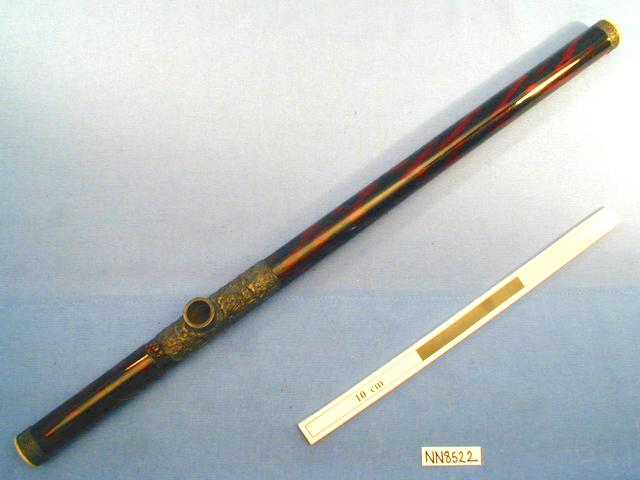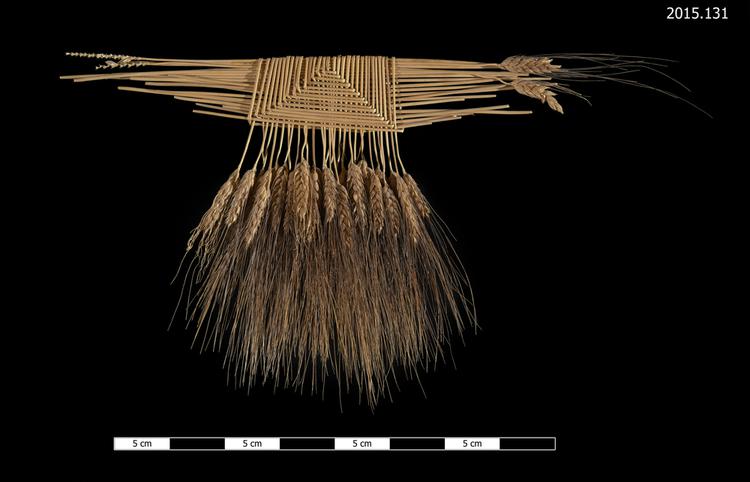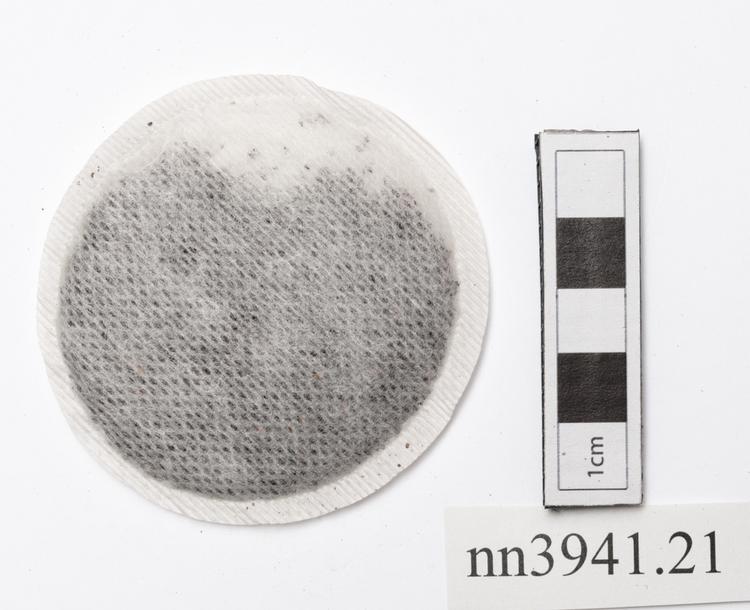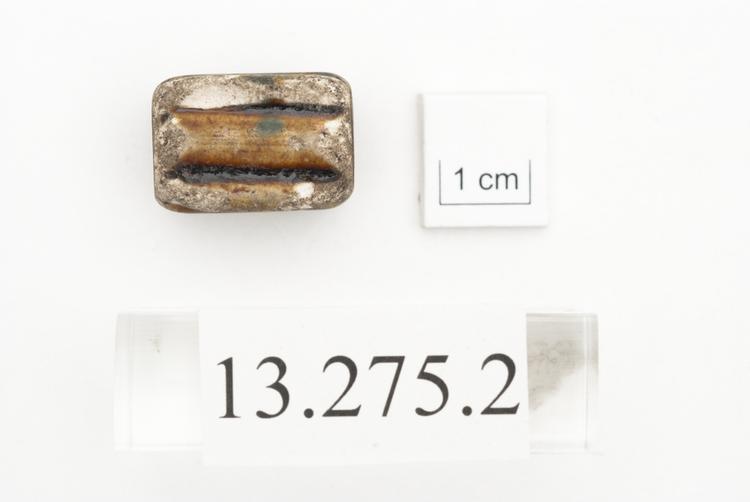
An opium pipe formed of a long cylinder, probably with a bamboo base, covered in a faux tortoise shell veneer. There is a silver plated mount with a floral, raised decoration, with two matching bands at the ends. The end piece and mouthpiece are made of bone and slots into the ends. The mouthpiece has a hole at the centre.
The widespread use of opium in China dates to tobacco-smoking in pipes introduced by the Dutch from Java in the 17th century. Whereas Indians ordinarily ate opium, the Chinese smoked it. Old encrusted opium-pipes were still valuable because they contained a residue of charcoal and raw opium known as "dross". Dross could be recycled with tobacco plus various adulterants and sold to the poor. Styles of opium pipe reflected the relative wealth or poverty of their owners. Pipes ranged from bejewelled, elaborately ornamented works of art to simple constructions of clay or bamboo.


































































































































































































































































































































































































































































































































